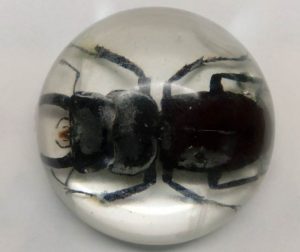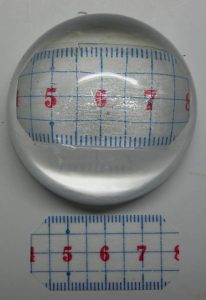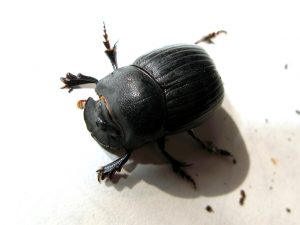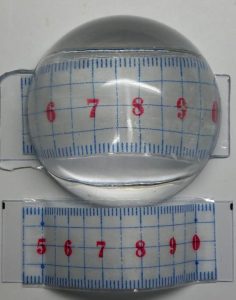Why a specimen looks distorted in a hemispherical resin? -First half
– to see the specimen in a resin from many angles (resins encapsulating a specimen often shapes rectangular and the specimen is only seen from the top or side)
 Figure. 1. A specimen of a stag beetle
Figure. 1. A specimen of a stag beetle
First, I made a specimen and encapsulated it in a hemispherical resin (Please also see Dandelion seed puffs preserved in resin).
The product looked like this.
 Figure. 2. A stag beetle specimen in a hemispherical resin
Figure. 2. A stag beetle specimen in a hemispherical resin
Mandible looks shrunk and head and abdomen look expanded. I was not happy with this appearance.
I could not end with this unexpected result. I tried to clarify how the distortion behaved and how we could minimize it, if possible.
The first half contains many pictures and its message is simple. At the same time, we will see the conclusion how to minimize the distortion.
The second half in another post will contain basic physics and drawing figures to understand the distortion further.
The first half- Understanding the distortion in the hemispherical resin by making models
First, I made a cubic and a hemispherical resins that have the same height to see how the shape of resin affects the appearance of the specimen inside.
 Figure. 3. Scales in a cubic and a hemispherical resins
Figure. 3. Scales in a cubic and a hemispherical resins
A scale encapsulated in the hemispherical resin was much distorted. The numbers “1”and “9” expanded and “2” and “8” almost disappeared. It seems 1) the center part was less affected, 2) the middle outer part expanded, and 3) the outer part was compressed.
Now we know:
“I. A small specimen that occupies only the center part would be less affected by the distortion.”
Another perspective is that the deeper the specimen lays in the resin, the heavier the distortion would be. This idea is based on the nature of optical refraction, but I would omit its detail in the first half.
I checked the idea by making an another model.
 Figure. 4. A scale in shallow position in a hemispherical resin
Figure. 4. A scale in shallow position in a hemispherical resin
It looks better than the original (Figure. 3.) although it is slightly affected by the distortion.
Now we know:
“II. A specimen that is lain at shallow position will be less affected by the distortion.”
How we realize the two tips at the same time? A dumpy (round shaped (I.) and has height(II.)) insect like a dung beetle may be good.
 Figure. 5. A horned dung beetle
Figure. 5. A horned dung beetle
I checked the idea by making another model.
 Figure. 6. An arch shaped scale in a hemispherical resin
Figure. 6. An arch shaped scale in a hemispherical resin
Looks good.
Instead of using a dung beetle , I made this. I allocated an acorn to lift a drone beetle.
 Figure. 7. A drone beetle on an acorn in a hemispherical resin
Figure. 7. A drone beetle on an acorn in a hemispherical resin
As expected, the specimen was less affected by the distortion.
Conclusion
To make a specimen that is less affected by the distortion in hemispherical resin, you may try
“I. A small specimen that occupies only the center part would be less affected by the distortion.”
“II. A specimen that is lain at shallow position will be less affected by the distortion.”
To minimize the distortion, you may apply the two tips at the same time.
Using a dumpy insect like a dung beetle or making a structure to lift the specimen like Figure 7 would gave you better results.
In the second half, we will understand the distortion further by using basic physics.
Finally the post will bring a result that enables us to predict the distorted appearance from a picture of any insect, without making a hemispherical resin.